
Intro
The trike has been in development for six years. During that time there have been numerous prototypes that have
been built, tested, and dismantled. Currently, there are two prototypes in existence. One is at the Petersen
Automotive Museum in Los Angles, California and one is at Sceadu Design in Navarre, Florida.
Initial Concept
We started with the question ... What would happen if you combined the light weight technologies developed
for recumbent trikes with a small gas or electric power source, packaged it all in a body that would be fun
to be seen in, and made it affordable?
The Sceadu SD-1 was designed to answer this question. To meet these goals, we decided that the Sceadu should
be more like a grown-up powered recumbent trike, and less like a shrunk-down car. The simplicity and low
weight that comes from this approach frees the Sceadu and its owner from burdensome purchasing,
maintenance,and usage costs, while giving "the freedom of the road" back to the owner.
The photo above is a "Scorpion" recumbent pedal trike made by "Crank-it".
Why Three Wheels
Three wheels allow for easy suspension solutions since three points will always make firm contact on any surface
(like a camera tripod).
Three wheels have lower rolling resistance and less weight than four wheels, which translates into lower energy
consumption.
Three wheeled vehicles are legally defined as motorcycles for DOT and insurance purposes, which allows for
simpler, lighter designs, and lower insurance costs.
The biggest concern related to three wheelers is stability, especially while cornering. We've all seen pictures of
three wheeled cars lying on their side (like the one in "Mr Bean"). The issue is not three wheels, but rather
weight poorly distributed onto three wheels.
When three wheelers are designed with the weight properly distributed, they can achieve the same lateral stability
as the best sports cars.
One very good example of a stable three wheeler was designed by Bob Keyes. He was a physicist with 30 years
of experience in the aerospace and defense business. His car can be seen at his website :
www.vigillante.com.
User Poll
The first thing we wanted to know was what people that liked three wheelers wanted. Elvis Payne runs a great
3-wheeler website named : www.3wheelers.com.
He agreed to post some questions on his site so viewers
could help define the design of the car.
Here are the questions and viewers responses :
Is the "2 wheels front / 1 rear" layout better than the "1 front / 2 rear" ... or does it really matter?
96% pro 2 wheels front 1 back, 4% pro 1 front 2 back
Should the vehicle be steered by the front wheel(s) or the rear wheel(s)?
98% pro front steering, 2% maybe pro back
What should the steering controls be like (steering wheel, motorcycle style bars, joy stick, side controls)?
50% pro steering wheel, 50% pro whatever
How many people should the vehicle carry, and in what layout?
55% pro 2 seater, 45% pro 1 seater.
70% pro tandem 30% pro side-by-side (if 2 seater)
What should the top speed be?
75% said 45 mph top speed, 25% said 75 mph top speed
What should the vehicle sell for?
80% said $4000 US maximum, 20% said $7000 US maximum
Prototype 1
The frame consisted of two sections, the drive frame and the body frame. The drive frame was T shaped and
contained all drive, steering, and braking components. The body frame held all body and seat components,
and provided the crash cage protection for the users.
To reduce complexity and cost, the only suspension was between the drive frame and the body frame.
The idea came from looking at spring-loaded seats on older motorcycles.
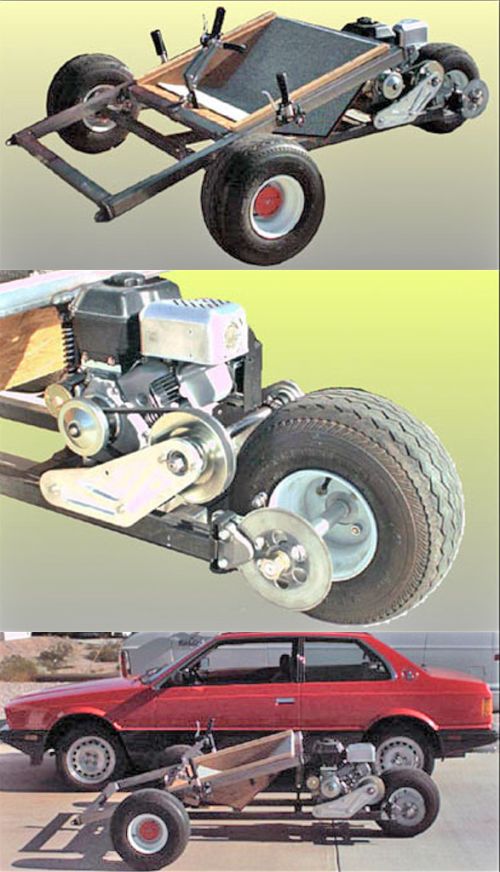
A complete set of molds was made and the body was then molded using fiberglass, UV resistant gel coat,
and vinyl-ester resin.
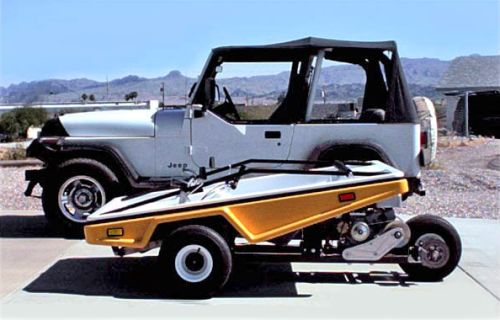
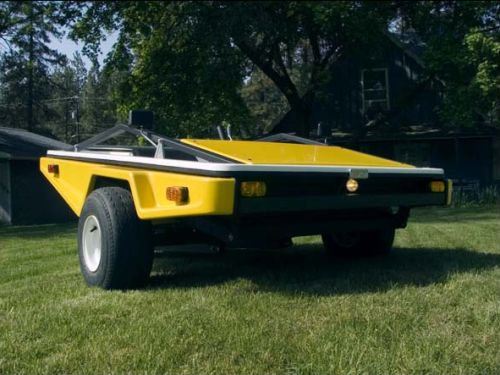
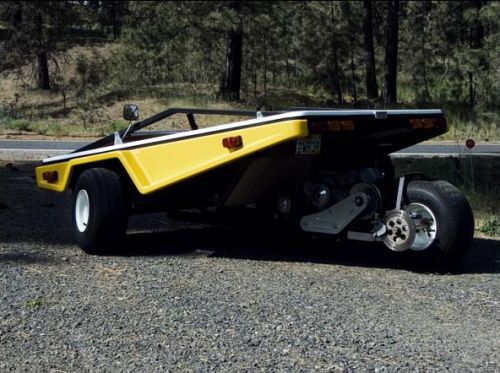
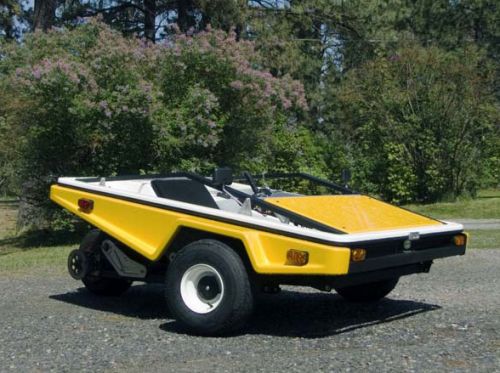
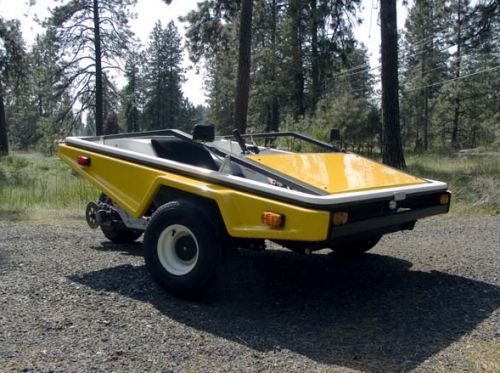
After a year of testing and over 2500 miles, the first prototype was retired and sent to the Petersen Museum
in Los Angeles, California, where it is now on permanent display.
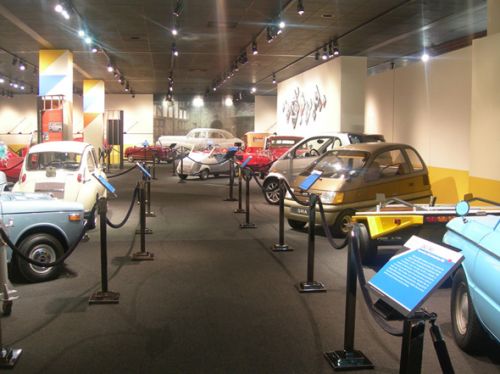
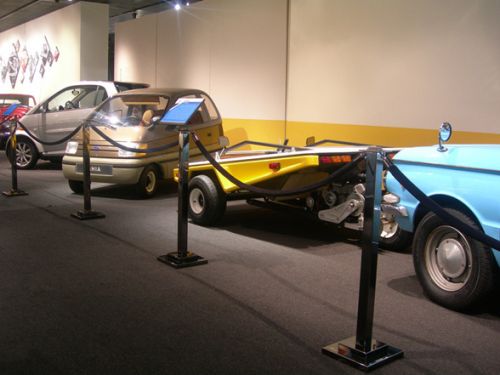
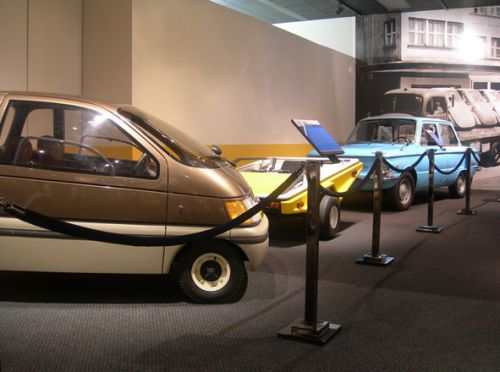
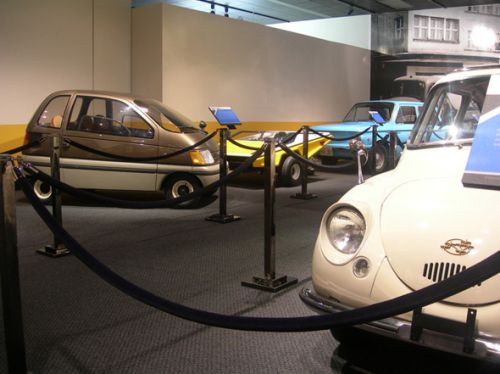
Prototype 2
Prototype 2 had numerous changes based on things we had learned with the first unit.
 Disk brakes on all 3 wheels (rather than dual disk on the rear only) Disk brakes on all 3 wheels (rather than dual disk on the rear only)
 10" wheels (rather than 8") 10" wheels (rather than 8")
 Rubber isolation between the upper and lower frames Rubber isolation between the upper and lower frames
 Dry weight of 350 lbs (the first prototype weighed 450 lbs) Dry weight of 350 lbs (the first prototype weighed 450 lbs)
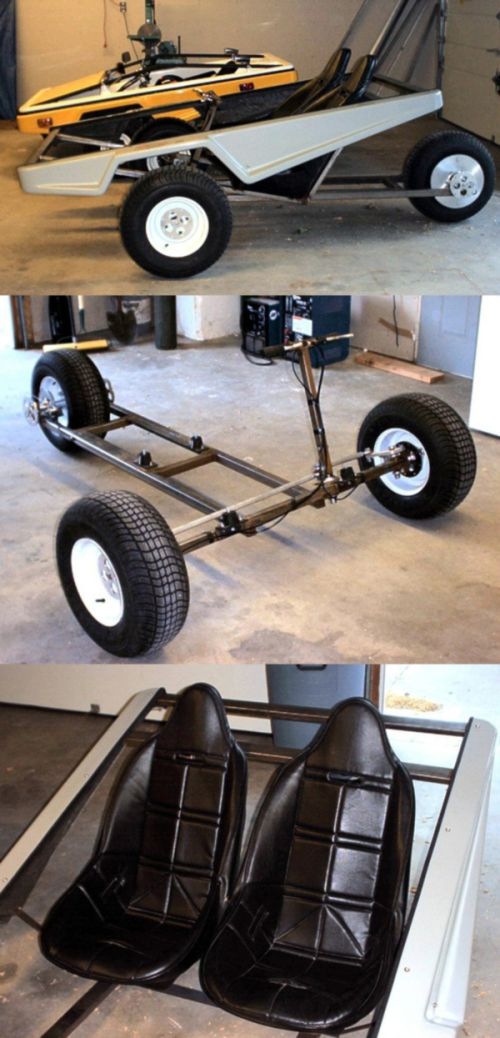
A few additional molds were made for interior panels and a rear fender.
A shatter resistant polycarbonate windshield was also added.
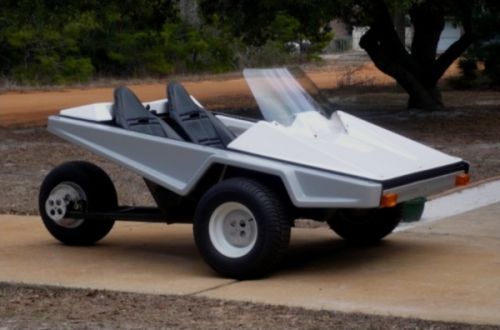
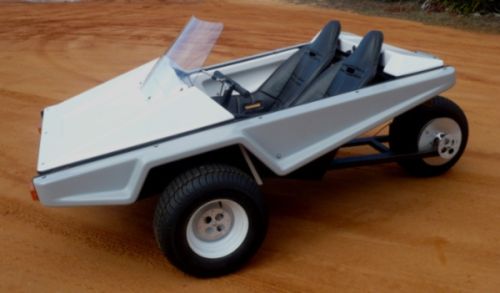
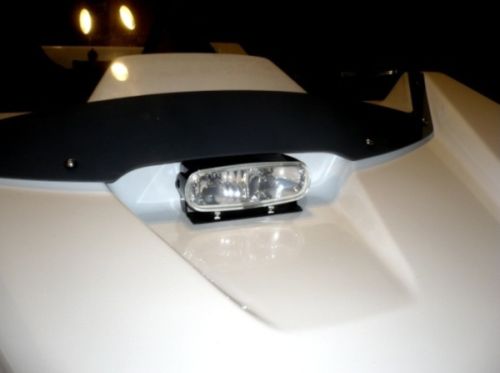
A combination drive consisting of a 5.5 HP honda motor and a 1 HP PM electric motor was tested.
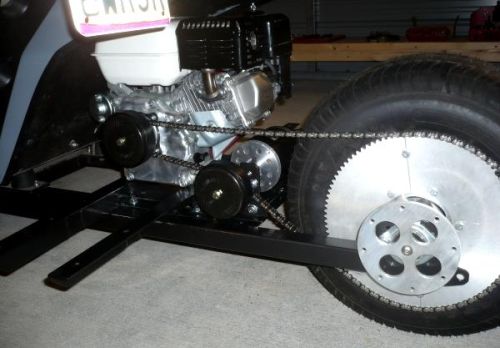
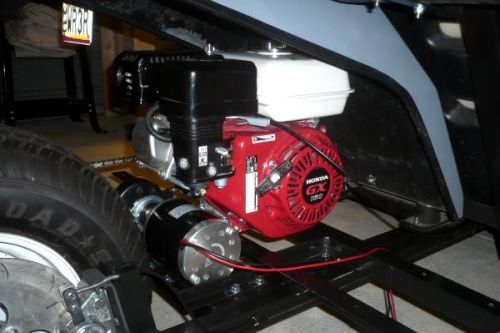
Early Sketches
I decided early-on that the 3-wheeler should visually brag about the fact that it had 3 wheels, not try
to hid the fact as some 3 wheelers do. Here are the first sketches that I felt captured that goal.
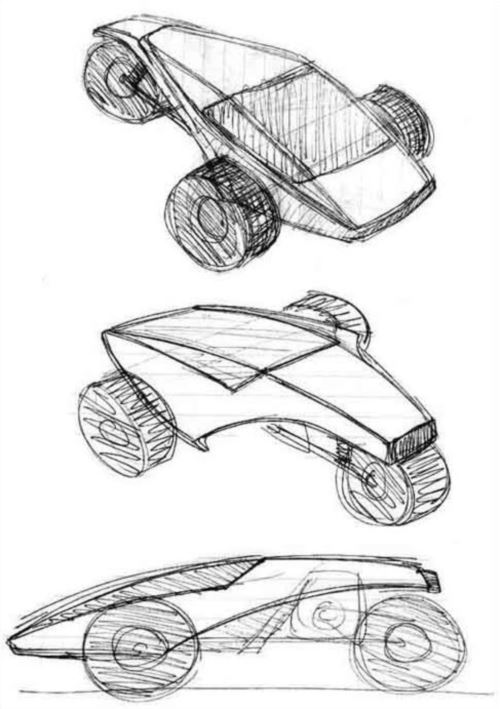
This sketch captured the "zoom" I was looking for. It also shows the first thoughts about the rear monoshock.
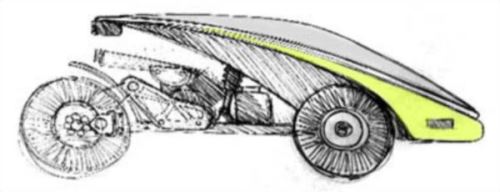
Now comes the reality of trying to fit 2 people side-by-side. Not my favorite look because the body lost its
rear taper that I liked so much. At this time I started wondering about a 1 person vehicle.
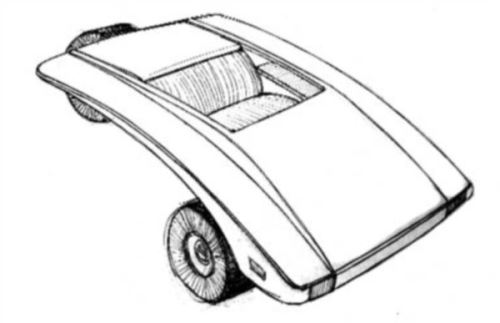
Well, 2 seats side-by-side won out over the tapered look. Next came thoughts about how to put the
various body sections together.
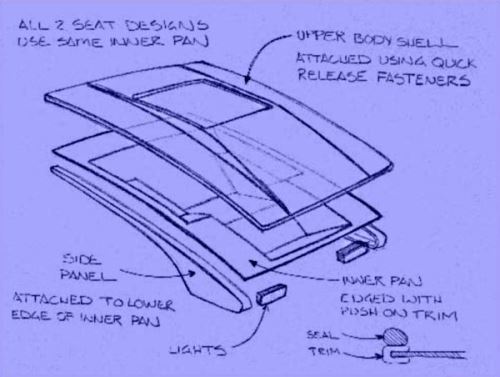
|












 Disk brakes on all 3 wheels (rather than dual disk on the rear only)
Disk brakes on all 3 wheels (rather than dual disk on the rear only)








